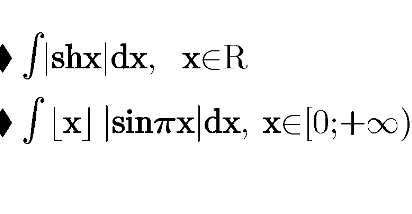
AllQuestion and Answers: Page 1228
Question Number 93059 Answers: 1 Comments: 0
$$\mathrm{y}^{'} +\mathrm{2xy}=\mathrm{cos}\:\mathrm{x}+\mathrm{2x}\:\mathrm{sin}\:\mathrm{x} \\ $$
Question Number 93057 Answers: 1 Comments: 1
Question Number 93045 Answers: 1 Comments: 2
$$\int\:\mathrm{sin}^{−\mathrm{1}} \left(\sqrt{\frac{{x}}{\mathrm{2}}}\right)\:{dx}\: \\ $$
Question Number 93044 Answers: 1 Comments: 2
Question Number 93039 Answers: 0 Comments: 1
Question Number 93038 Answers: 1 Comments: 1
Question Number 93033 Answers: 0 Comments: 3
Question Number 93031 Answers: 1 Comments: 11

Question Number 93077 Answers: 1 Comments: 1
Question Number 93081 Answers: 0 Comments: 3
Question Number 93005 Answers: 1 Comments: 0
Question Number 93003 Answers: 1 Comments: 0
Question Number 92997 Answers: 1 Comments: 0

Question Number 92993 Answers: 0 Comments: 1
Question Number 92987 Answers: 2 Comments: 0
Question Number 93004 Answers: 0 Comments: 0
Question Number 92980 Answers: 1 Comments: 0
Question Number 92976 Answers: 1 Comments: 0
Question Number 92971 Answers: 0 Comments: 3
Question Number 92966 Answers: 0 Comments: 3
Question Number 92960 Answers: 2 Comments: 0
Question Number 92957 Answers: 0 Comments: 12
Question Number 92952 Answers: 0 Comments: 1
Question Number 92949 Answers: 1 Comments: 2
Question Number 92940 Answers: 0 Comments: 0
Question Number 92939 Answers: 0 Comments: 0
Pg 1223 Pg 1224 Pg 1225 Pg 1226 Pg 1227 Pg 1228 Pg 1229 Pg 1230 Pg 1231 Pg 1232
